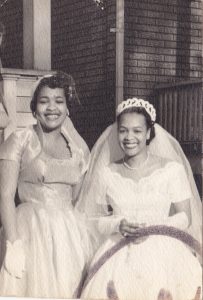
25 Jan Case study, Aunt Dot: The challenges of “aging in place”
Podcast: Play in new window | Download
Meet Dot, who turns 93 in April. She moved into her home in Baldwin Hills, an affluent neighborhood in Los Angeles, in the late 1960s. Though her husband died decades ago, she’s lived a vibrant life on her own, enjoying the arts while working in a long career at the phone company.
In legal documents she prepared with the help of a lawyer recently, she stipulated that she wants to die at home. This sort of commitment to “aging in place,” as it’s called, is common. It’s even a growing industry for contractors who retrofit houses to accommodate our changing needs as we age.
Sounds reasonable, right? Most people don’t want to move from their beloved domiciles, especially as they get older. What, however, if they can no longer take care of themselves? Aunt Dot herself recognizes, as she’s confessed to her nephew Kevin, that she’s “losing it.”
Kevin lives way across town from Dot, an hour in off-rush traffic. He moved here a few years ago, in his fifties, to start a new life and tackle a new career. In California, that means carrying two jobs to make ends meet. (That’s a whole other story for another day.)
When Kevin arrived, he didn’t factor in this unpaid third assignment that now consumes him: Caring for Dot. He’s her closest living relative.
If you say, “Hire someone to help her,” then you don’t have an aunt Dot in your life (rest assured, you likely will.) Getting most older people to agree to a caretaker is a monumental feat. It took a lot of cajoling, but Dot finally agreed, in part because she retired herself from driving after three fender-benders and could no longer get around.
Kevin relieves the stress of managing the situation of his aunt and her declining mental state by recounting the saga on Facebook. In recent days, he frantically took a day off work when he couldn’t reach her by phone, only to find when he arrived that she’d hung up the receiver incorrectly. Dozens of friends invariably chime in with varying bits of encouragement and wisdom–some of them borne from personal experience with their own Aunt Dot, others clearly well-intentioned but unaware of the challenges and limitations of negotiating care of an older adult.
There is no “app for that” when it comes to the delicate and thorny issues raised by eldercare.
A few weeks ago, I invited Kevin–a friend since our days at Hampshire College–to talk about the realities of assisting an older relative–not because I felt we could solve anything, but because I felt it’s important to share these stories. An estimated 17 million people are caring for elderly relatives, some managing that care from a distance even farther than Kevin’s from his aunt.
We who are younger, of course, think our lives will be different. But how? Last year I interviewed some people in their fifties who bought a tract of land in the hopes of retiring there, together, and pooling resources for later-in-life care. Listen to this interview with one of the founders of the “Llano Exit Strategy” for one alternative. Is it realistic? Time will tell.



